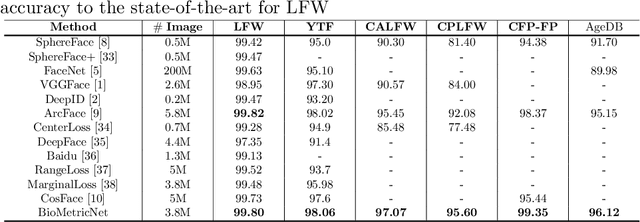Matteo Testa
Eta-WavLM: Efficient Speaker Identity Removal in Self-Supervised Speech Representations Using a Simple Linear Equation
May 25, 2025Abstract:Self-supervised learning (SSL) has reduced the reliance on expensive labeling in speech technologies by learning meaningful representations from unannotated data. Since most SSL-based downstream tasks prioritize content information in speech, ideal representations should disentangle content from unwanted variations like speaker characteristics in the SSL representations. However, removing speaker information often degrades other speech components, and existing methods either fail to fully disentangle speaker identity or require resource-intensive models. In this paper, we propose a novel disentanglement method that linearly decomposes SSL representations into speaker-specific and speaker-independent components, effectively generating speaker disentangled representations. Comprehensive experiments show that our approach achieves speaker independence and as such, when applied to content-driven tasks such as voice conversion, our representations yield significant improvements over state-of-the-art methods.
Enhancing Polyglot Voices by Leveraging Cross-Lingual Fine-Tuning in Any-to-One Voice Conversion
Sep 25, 2024Abstract:The creation of artificial polyglot voices remains a challenging task, despite considerable progress in recent years. This paper investigates self-supervised learning for voice conversion to create native-sounding polyglot voices. We introduce a novel cross-lingual any-to-one voice conversion system that is able to preserve the source accent without the need for multilingual data from the target speaker. In addition, we show a novel cross-lingual fine-tuning strategy that further improves the accent and reduces the training data requirements. Objective and subjective evaluations with English, Spanish, French and Mandarin Chinese confirm that our approach improves on state-of-the-art methods, enhancing the speech intelligibility and overall quality of the converted speech, especially in cross-lingual scenarios. Audio samples are available at https://giuseppe-ruggiero.github.io/a2o-vc-demo/
BioMetricNet: deep unconstrained face verification through learning of metrics regularized onto Gaussian distributions
Aug 13, 2020



Abstract:We present BioMetricNet: a novel framework for deep unconstrained face verification which learns a regularized metric to compare facial features. Differently from popular methods such as FaceNet, the proposed approach does not impose any specific metric on facial features; instead, it shapes the decision space by learning a latent representation in which matching and non-matching pairs are mapped onto clearly separated and well-behaved target distributions. In particular, the network jointly learns the best feature representation, and the best metric that follows the target distributions, to be used to discriminate face images. In this paper we present this general framework, first of its kind for facial verification, and tailor it to Gaussian distributions. This choice enables the use of a simple linear decision boundary that can be tuned to achieve the desired trade-off between false alarm and genuine acceptance rate, and leads to a loss function that can be written in closed form. Extensive analysis and experimentation on publicly available datasets such as Labeled Faces in the wild (LFW), Youtube faces (YTF), Celebrities in Frontal-Profile in the Wild (CFP), and challenging datasets like cross-age LFW (CALFW), cross-pose LFW (CPLFW), In-the-wild Age Dataset (AgeDB) show a significant performance improvement and confirms the effectiveness and superiority of BioMetricNet over existing state-of-the-art methods.
Learning mappings onto regularized latent spaces for biometric authentication
Nov 20, 2019



Abstract:We propose a novel architecture for generic biometric authentication based on deep neural networks: RegNet. Differently from other methods, RegNet learns a mapping of the input biometric traits onto a target distribution in a well-behaved space in which users can be separated by means of simple and tunable boundaries. More specifically, authorized and unauthorized users are mapped onto two different and well behaved Gaussian distributions. The novel approach of learning the mapping instead of the boundaries further avoids the problem encountered in typical classifiers for which the learnt boundaries may be complex and difficult to analyze. RegNet achieves high performance in terms of security metrics such as Equal Error Rate (EER), False Acceptance Rate (FAR) and Genuine Acceptance Rate (GAR). The experiments we conducted on publicly available datasets of face and fingerprint confirm the effectiveness of the proposed system.
 Add to Chrome
Add to Chrome Add to Firefox
Add to Firefox Add to Edge
Add to Edge